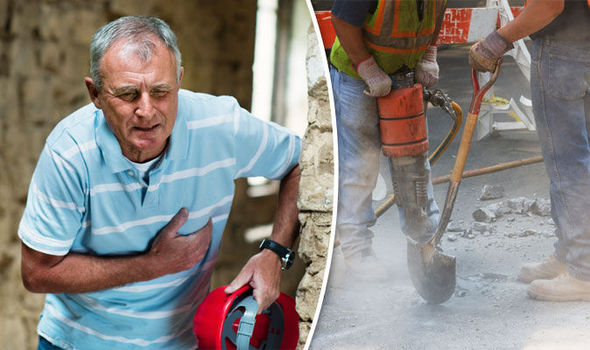Studies have shown a relationship between noise and increased risk of hypertension, heart attack and angina.
Mathias Basner, a scientist dedicated to the study of noise in a lecture on TEDMED talks about how noise affects health and sleep people, reports the online edition of the Chronicle.info with reference for a New time.
In our day, silence is a rare pleasure, and the price is our health. Surprisingly high price, as it turned out. Fortunately, we have things to do today — each of us personally and society in General — to better protect your health and enjoy the benefits of silence.
I assume most of you know: the high level of noise leads to hearing loss. Whether you go with a concert or bar, if you experience ringing in the ears, you can be sure that you already have damaged hearing and, most likely, it is irreversible. Hearing loss is no joke. However, the noise is damaging our health in other ways. They are not well known, but just as dangerous as impaired hearing.
So what do we mean when we speak about noise? Noise is defined as unwanted sound, which includes the physical component, that is, the sound as such, and the physiological component — the circumstances that make this undesirable sound. A good example is a rock concert. The spectators who came to the rock concert does not consider the performance of musicians noise even with the volume at 100 decibels. They enjoy the music and even pay a hundred dollars for a ticket, so whatever loud music may be, they do not perceive it as noise.
For comparison, someone living three blocks from the concert hall, trying to read a book but can’t focus because of the music. Although the sound pressure in this situation is much lower, people perceive this music as noise that can provoke a reaction, which over time will adversely affect his health.
So why is it so important to be able to enjoy the silence? Because, in addition to hearing loss, the noise has an impact on human health overall. However, in our time is becoming increasingly difficult to find a quiet place in view of the constantly increasing number of vehicles, urbanization, unfolding construction, air conditioners, machines for harvesting leaves, lawn mowers, outdoor concerts and bars, players and neighbours having parties till three in the morning.
In 2011, the world health organization estimated that each year in Western Europe due to noise pollution lost 1.6 million healthy years of life. One of the results of noise impact is the creation of communication barriers. You have to speak louder to be understood. In the worst case, may even be necessary to interrupt communication. In a noisy environment, the probability that it will be misinterpreted. This is a possible explanation for why the children attending schools in noisy areas, academic achievement lower than their peers, as evidenced by the conducted research.
Another result of the impact of noise on the body is the increased risk of cardiovascular disease in people exposed to certain noise levels over a long period of time. Noise causes stress, especially if we are not able to control it. Our body produces stress hormones such as adrenaline and cortisol, which alters the composition of the blood, as well as the structure of blood vessel walls, which become less elastic in just one night in a noisy room.
Epidemiological studies have shown a relationship between noise and increased risk of hypertension, heart attack and angina. And despite the fact that this risk accumulates in small doses, it poses a great problem for public health because the noise is everywhere, and he affected many of us.
A recent study showed that reducing the noise pollution of the environment by only five decibels, Americans annually would save $3.9 billion, which today are spent on the treatment of cardiovascular diseases. There are other diseases, such as cancer, diabetes and obesity, which are also associated with the influence of noise, but we do not yet have sufficient evidence that the noise is the cause of their development.
Another important consequence of noise pollution is sleep disturbance. Sleep is an active mechanism for the body, it prepares us for the next phase of wakefulness. The silence in the bedroom is the key to what researchers call “hygiene healthy sleep”. And our auditory system is the guard, which carries out constant monitoring of the external environment, identifying potential threats, even when we sleep. Therefore, the noise in the bedroom prevents to fall asleep quickly.
Because of the noise, we can Wake up in the night. It can also prevent the normalization of blood pressure during sleep. There is an assumption that if the result of the noise a person experiences insomnia for several months and even years, the risk of cardiovascular disease increases. However, often we are not aware of the sleep disturbances caused by noise, because during sleep a person is unconscious.
We conducted a study of the impact on sleep traffic noise. Waking up in the morning, many of the subjects told us: “I slept great, once fell asleep and never woke up”. But when we looked at made during sleep recording physiological reactions of subjects, we saw that they woke up and their sleep was very intermittent. These periods of wakefulness was too short so that the subjects were awake and in the morning nothing of them remembered. However, these periods can significantly affect how relaxed people feel after sleep.
So what sounds are considered too loud? The first sign is that you have to change their behaviour. To be understood you have to speak louder. Or you turn on the TV on high volume, avoid being outdoors or close the Windows, moving the bedroom on the ground floor of the house or even installing insulation. A move to less noisy areas but, of course, not everyone can afford it.
What can we do right now to improve our sound environment and protect the health? First, if you think some sounds are too loud, do not be silent about it. Many theatre owners seem to think that in the movie, just go deaf. If you complained about the noise, but there was no response, ask for a refund or leave it. This language, as a rule, administrators know very well.
Also explain to children that noise affects health and what if now they will listen to loud music, then in older age they will have to reap the rewards.
You can also move the bedroom in the quietest place in the house: the noise of street transportation you will protect the walls of your home. Seeking rental or purchase of housing, give preference to locations that are in quiet areas. Visit the place of your future residence at different times of the day, ask neighbours about how noisy things are in this area.
Wear noise-cancelling headphones while travelling or in the office, if your building a high level of background noise. In General, looking for a quiet place, especially at weekends or during the holidays. Let your body relax.
By the way, four years ago, I visited Japan for a conference on the issues of noise pollution. When I returned to the United States, already at the airport I covered the sound wave. This suggests that we have ceased to realize that are constantly subjected to noise pollution and what value we are a quiet space.
What else can you do? There is such a thing as a carbon footprint. By analogy, there is a noise trace. And there are things we can do to make this footprint smaller. For example, it is not necessary to mow the lawn on Saturday at seven in the morning. Your neighbours will say thank you for it. Or use a rake instead of a blower. In General, it is most reasonable to limit the noise at its very source, so when you are going to buy a new car, air conditioning, blender, or something else, give preference to those models that create less noise. Many manufacturers indicate the level of noise generated by their merchandise, and some even advertise it. Take advantage of this information.
Many believe that the solution is to strengthen the regulation and control of noise, considering it obvious. But not so simple as it seems because many of the activities that create noise, are also a source of profit. Take, for example, the airport and everything to do with his work. Thanks to our ongoing research policy, find out what level of noise can adversely affect health, allowing them to develop reasonable measures to reduce noise.
Robert Koch is credited with saying: “someday man will have for its existence as hard to deal with the noise, as he struggles now with cholera and the plague”. I think this moment has come, and I hope that we will win this fight. And when that happens, we quietly celebrate our victory.






